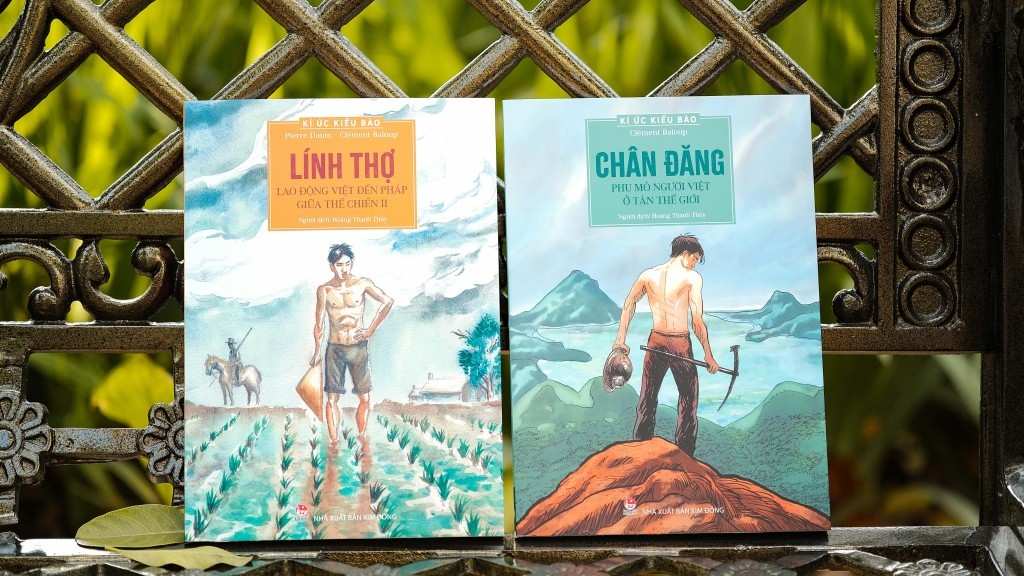Vietnamese King Ham Nghi's Art Works Exhibited in France
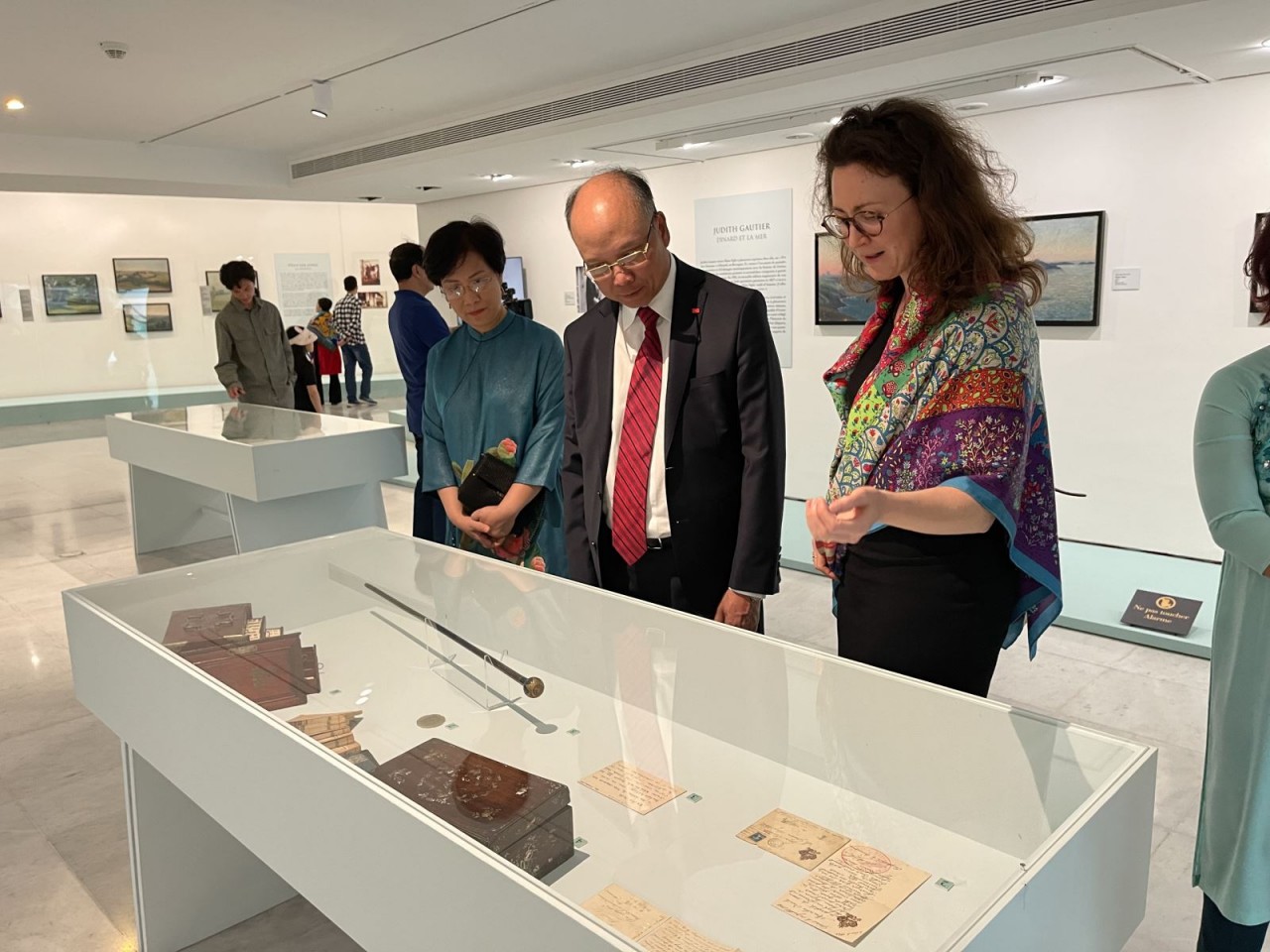 |
| Exiled Vietnamese emperor’s art works exhibited in France. Photo: VNA |
The exhibits were collected in nearly 10 years by Amandine Dabat, a fifth generation descendant of the King, who did a doctoral thesis on King Ham Nghi’s art career and is also the author of the book "Ham Nghi - Empereur en exil, artiste à Alger" (Ham Nghi - Emperor in exile, artist in Algeria) published in 2019 in France, reported VNA.
This is the first exhibition about King Ham Nghi since his death. The last exhibition held by the Emperor was in 1926.
The current exhibition aims to introduce to the public, both French and Vietnamese, a rather comprehensive look at the life of the exiled patriotic King with the soul of an artist and a sculptor, whose teachers were famous French artists.
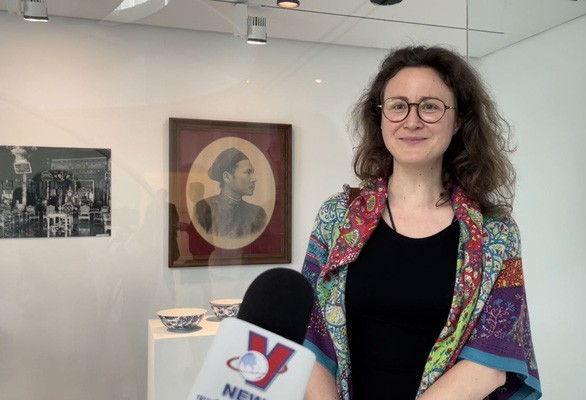 |
| Amandine Dabat, a 5th generation descendant of the King, who did a doctoral thesis on King Ham Nghi’s art career and is also the author of the book "Ham Nghi - Empereur en exil, artiste à Alger" (Ham Nghi - Emperor in exile, artist in Algeria) published in 2019 in France. Photo: VNA |
Adrien Bossard, the curator of the Nice Museum for Asian Arts, said the exhibition is a unique event because King Ham Nghi is an Asian, but he followed European impressionist art and developed his career in Africa.
He said the exhibition not only gives the public a new and interesting view of Asia, but also spotlights historical significance because the exhibits talk about a figure of royal lineage in Vietnam which was related to the Indochina war and the French colonial period in the Southeast Asian country.
The exhibition has so far attracted 8,000 visitors, and it is hoped to welcome 25,000 people by the end of June.
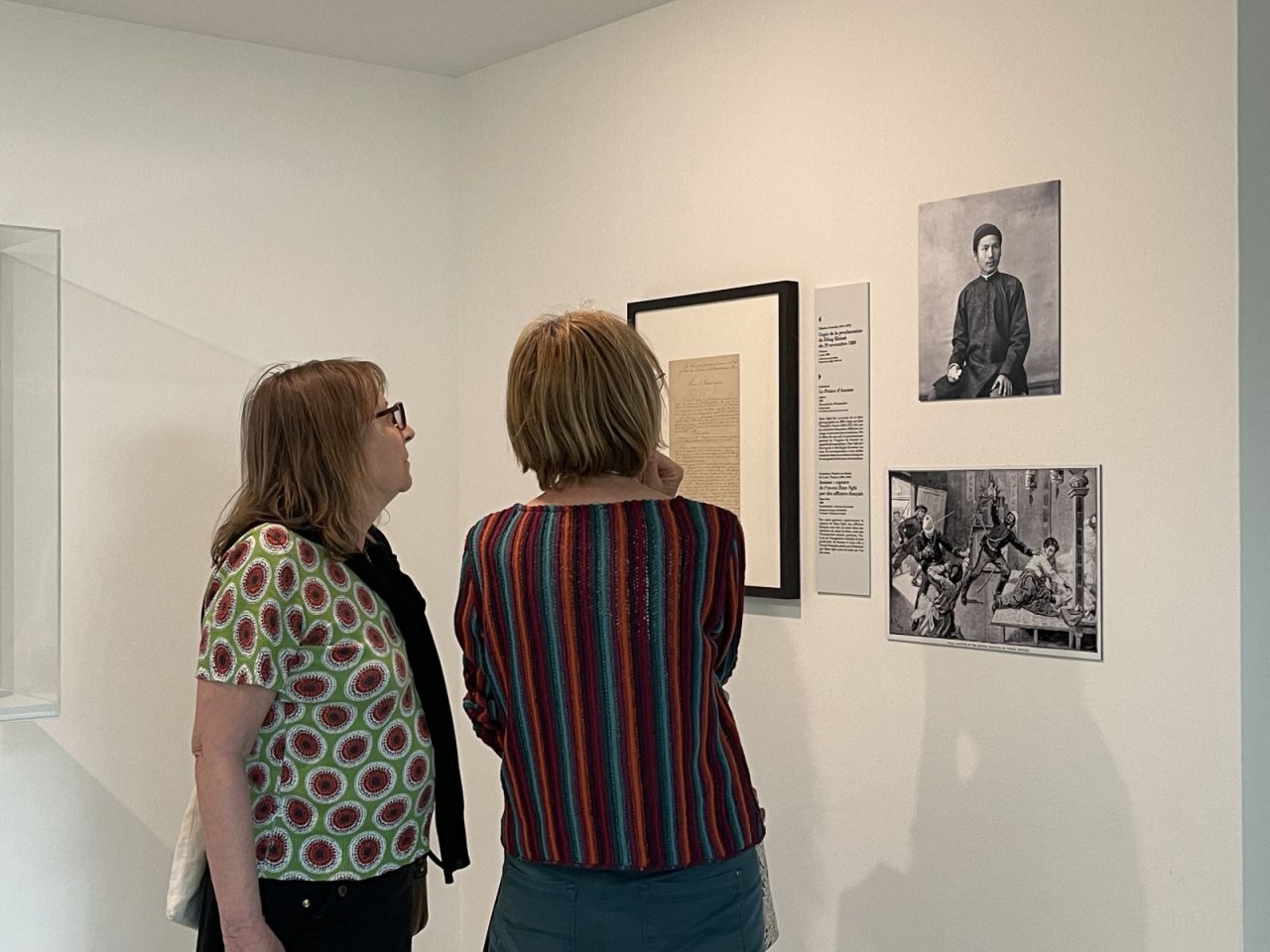 |
| Visitors to the exhibition. Photo: VNA |
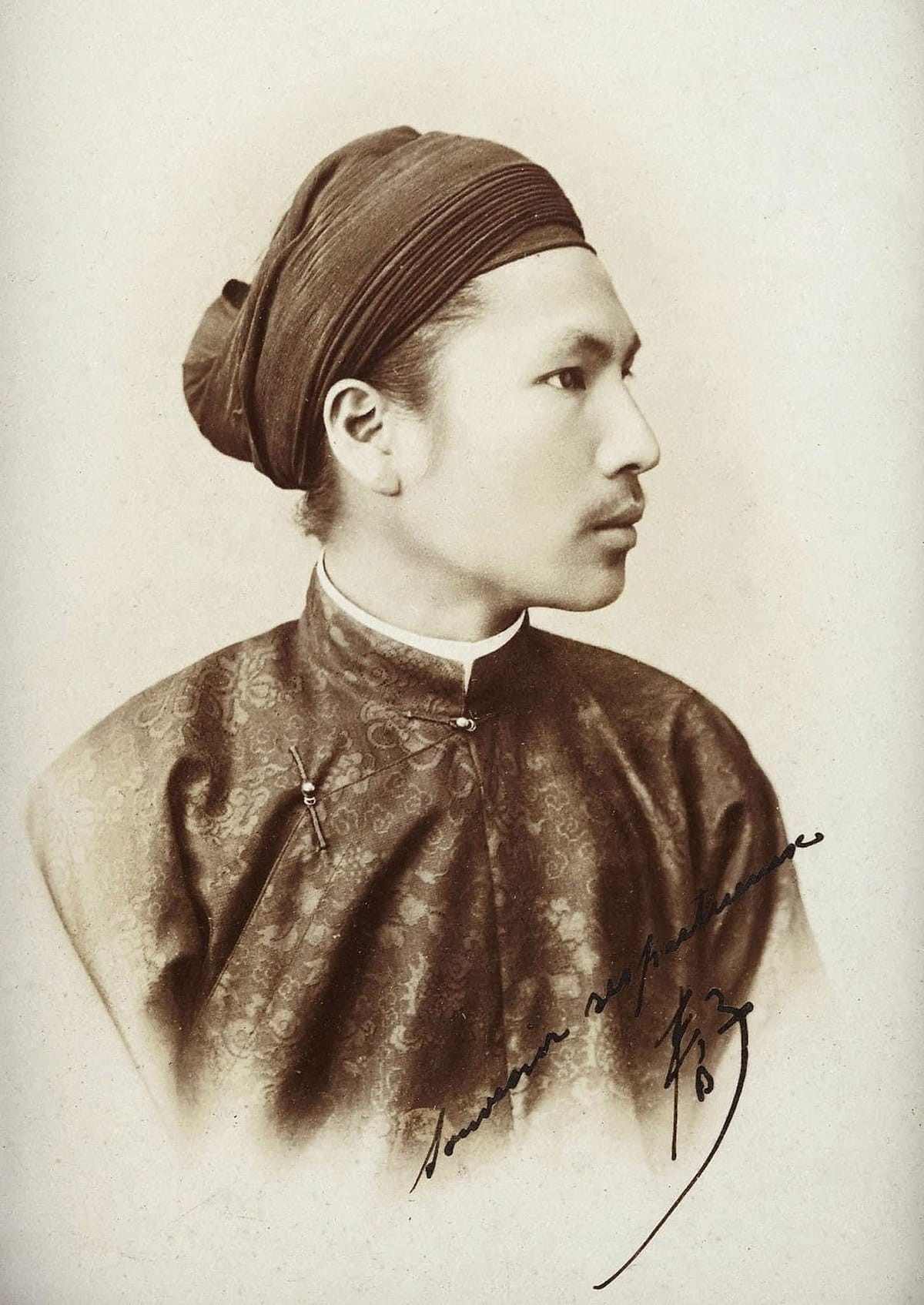 |
| Though Vietnamese Emperor Ham Nghi (1871-1944) was popularly known as an anti-French emperor, who was exiled to Algeria, he was also a little-known painter that held exhibitions in Paris, France. |
 |
| Emperor Ham Nghi pictured with a painting in Algeria. Photos courtesy of the Huế Cultural Heritage Research and Development Association |
Ham Nghi, whose real name was Nguyen Phuc Ung Lich, was the eighth emperor of the Vietnamese Nguyen Dynasty, but reigned for only one year (1884-85), according to Vietnam News
After the failure of the Can Vuong (Save the King) movement against French colonial rule, King Ham Nghi was captured and exiled to Algeria, then a colony of France, on December 12, 1888.
According to historical documents, to get over his boredom in exile, he studied French and was able to communicate with French intellectuals and learned how to ride a bicycle, rare among Vietnamese at the time.
He also studied photography, literature and especially painting. His first paintings were self-portraits in exile, of him wearing traditional royal attire and a headscarf.
His self-portraits were implied: “I am still an Annamite (a reference to Vietnamese people during the French protectorate in Vietnam) and the French colonists cannot subdue me.”
In addition to his self-portraits, the Emperor also painted portraits of relatives and friends. His artworks were often signed Tu Xuan, a pseudonym meaning “the Son of Spring”.
His first canvas depicting the rural landscape of Algeria was signed on May 19, 1899.
His artworks are diverse, from oil paintings and pastels to bronze, plaster and wood sculptures. Using his innate ability, he quickly learned and absorbed the skills that were taught by famous sculptor Auguste Rodin (1840-1917).
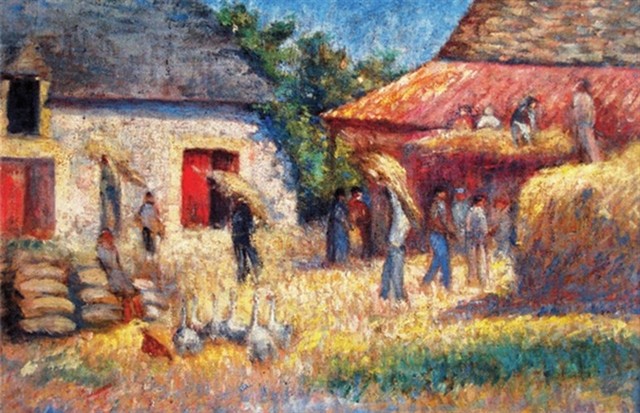 |
| Untitled, an oil on canvas by painter Tu Xuan (an artistic name of King Ham Nghi), dated 1900. |
According to painter Dang Mau Tuu, vice chairman of Hue Cultural Heritage Research and Development Association, King Ham Nghi painted at least 25 oil paintings on canvas from 1895 to 1902, nine of which were signed Xuan Tu, two Tu Xuan and 14 left unsigned. Among them are 17 landscape paintings, the largest of which is 49 by 64.5cm, while the smallest is 24 by 25cm.
However, some researchers believe that Tử Xuân created up to 45 oils on canvas during this period as some of his works were not dated.
One of his best works in this period is a painting that depicts the Algerian landscape.
Amandine commented that art offered an opportunity for the Emperor to preserve a bond with Indochina while in exile, and freely demonstrate his attachment to his homeland.
In his artistic life, Tu Xuan had three exhibitions in Paris, one at the Guimet Museum (1904), one at the December gallery (1909), and the Mantelet-Colette exhibition (1926).
The Mantelet-Colette exhibition featured 38 works in oils, 12 in pastels and eight bronze statues, including the famous painting Déclin du Jour (Decline of the Day). A number of his artworks were donated to the French.
During a talk in HCM City in 2015, Dabat revealed that there were fewer than 100 works by the King left, which he had gifted friends and family members. Many of his paintings were destroyed when his house was burned during a battle in Algeria in 1962.
Dabat organised an exhibition featuring paintings and statues by painter Tu Xuan in Paris in 2016, which left a great impression on art communities. One of his oil paintings, created in 1915, Déclin du Jour, was sold at an auction in Paris in November 2010 to a French collector for EUR 8,800 euros (US$ 9,240).
 | Vietnam Jumps Five Notches in Global Education Rankings Vietnam jumped five places in the 2021 global education rankings by global website US News to the 59th position. |
 | Vietnamese Diplomat Pays Working Visit to the Largest Brazilian State The visit aims to promote new cooperation potentials and strengthen ASEAN-Brazil relations. |
 | Vietnamese in Denmark Commemorates Legendary National Founders The Vietnamese community in Denmark has gathered to commemorate the death anniversary of Hung Kings - the country’s legendary founders. |
Recommended
 Overseas Vietnamese
Overseas Vietnamese
Language and Vocational School for Vietnamese launched in Germany
 Overseas Vietnamese
Overseas Vietnamese
A Heart-warming International Children's Day in Abyei
 Overseas Vietnamese
Overseas Vietnamese
Art Program Deepens Vietnam-Bulgaria Cultural Exchange and Friendship
 Overseas Vietnamese
Overseas Vietnamese
First Vietnamese Film Week Opens in Greece
 Overseas Vietnamese
Overseas Vietnamese
Strong Bonds Between Vietnam And Belarus, Azerbaijan, and Kazakhstan
 Overseas Vietnamese
Overseas Vietnamese
Vietnam Festival in Tokyo To Be Held for 18th Time
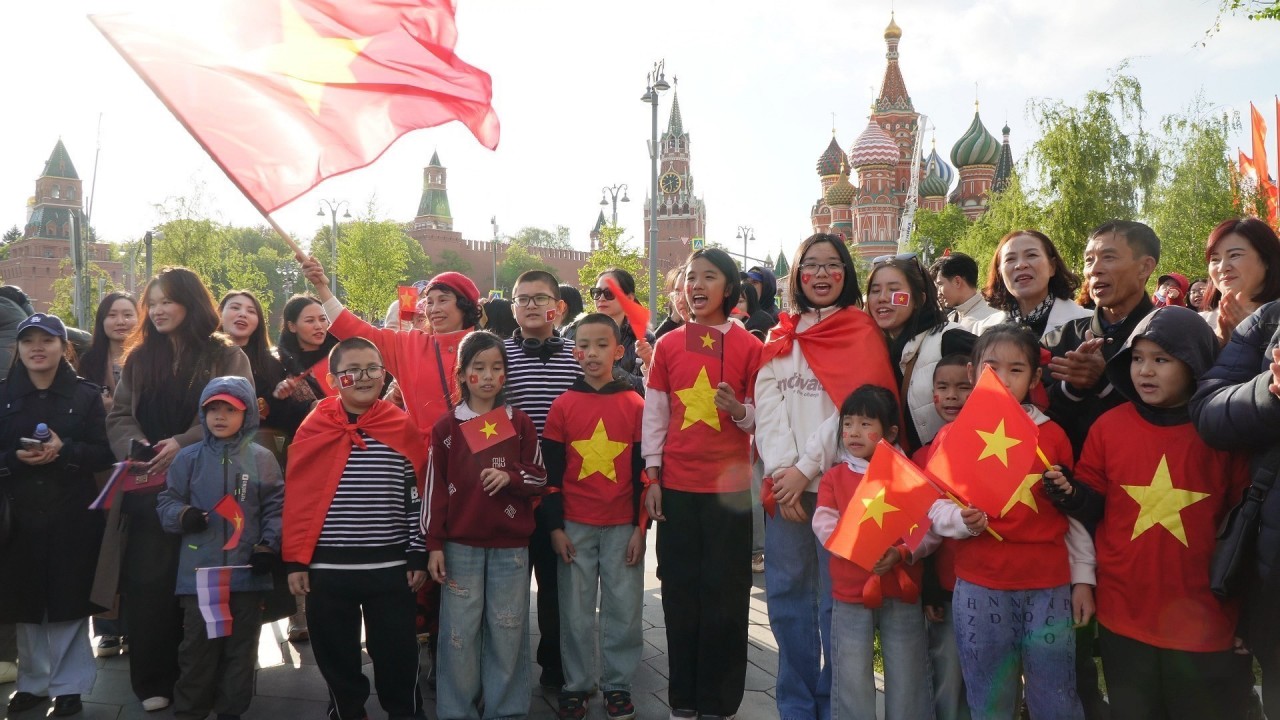 Focus
Focus
Overseas Vietnamese in Russia Welcome Vietnam People's Army Delegation at Red Square
 Overseas Vietnamese
Overseas Vietnamese

